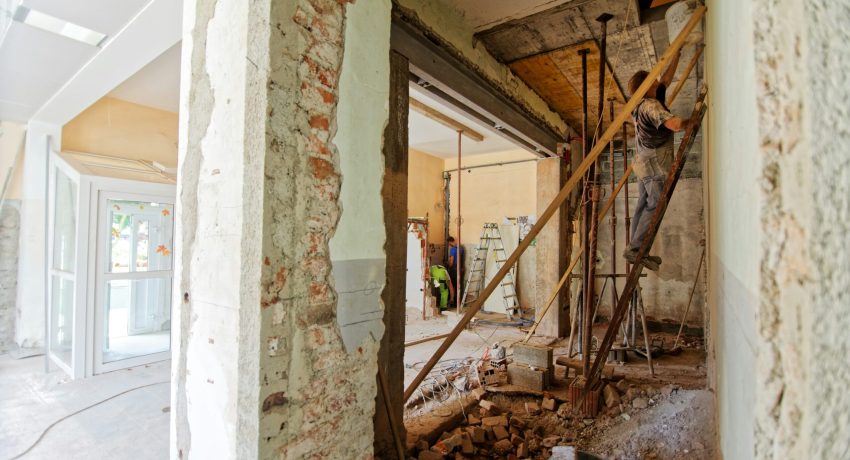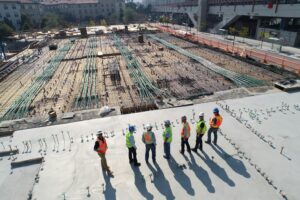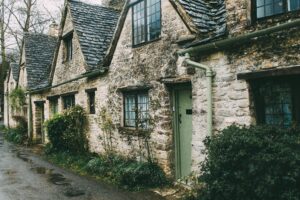How to Get Historic District Renovation Approval
Navigating the Historic District Renovation Approval Process
This section will provide an overview of the steps involved in seeking and obtaining approval for renovations in historic districts. It will cover the essential documentation, application procedures, and tips on how to ensure compliance with local regulations and guidelines established to preserve the historical integrity of the area.
Preparing Essential Documentation for Historic District Renovation Approval
Gathering the necessary paperwork is a fundamental step in obtaining historic district renovation approval. This includes detailed project plans, historical research, and any prior consultations with preservation experts. Proper documentation ensures transparency and helps local authorities understand the project’s scope and the measures taken to preserve the district’s character.
Understanding Application Procedures for Historic District Renovation
Navigating the application procedures for historic district renovation approval involves understanding the specific requirements set by local authorities. Applicants must complete forms accurately and provide supplementary materials. Familiarizing oneself with the process reduces the likelihood of delays and facilitates a smoother approval journey.
Tips for Ensuring Compliance with Local Regulations in Historic Districts
Ensuring compliance with local regulations is imperative for successful historic district renovation approval. It involves adhering to guidelines on materials, design, and structural changes. Engaging with local preservation committees early in the planning process can provide valuable insights and feedback, enhancing the project’s alignment with historical preservation goals.
Understanding Local Guidelines for Historic District Renovation Approval
This section will delve into the specific local guidelines and regulations that must be adhered to when seeking historic district renovation approval. It will explore how these guidelines impact renovation plans, the importance of early engagement with local preservation entities, and strategies to align renovation proposals with community and historical preservation goals.
Exploring Key Local Preservation Guidelines
Understanding local preservation guidelines is crucial for securing historic district renovation approval. These guidelines dictate permissible modifications, helping ensure that renovations align with the community’s historical and cultural values. Developing a comprehensive understanding of the rules can prevent setbacks and foster better collaboration with preservation authorities.
Engaging with Local Preservation Committees
Engaging with local preservation committees early in the renovation process is essential for gaining historic district renovation approval. These committees provide insights into acceptable practices and advise on aligning renovation plans with historical standards. Building a relationship with them can facilitate smoother communication and approval.
Aligning Renovation Proposals with Community Goals
To gain historic district renovation approval, it’s important to align renovation proposals with community goals. This involves understanding and integrating feedback from local stakeholders to ensure the project supports the district’s preservation goals. Collaboration with the community enhances the proposal’s acceptance and success.
Common Challenges in Historic District Renovation Approval
This section will address the typical obstacles faced during the historic district renovation approval process. It will discuss frequent issues raised by preservation committees, potential delays in approval, and solutions to overcome these challenges while ensuring renovation plans align with the historic preservation objectives.
Addressing Common Objections from Preservation Committees
One of the common challenges in historic district renovation approval is dealing with objections from preservation committees. These committees often raise concerns about how proposed changes might affect the historical integrity of a district. Understanding the common objections, such as alterations in architectural elements or the use of non-traditional materials, can help applicants prepare more robust proposals. Proactively addressing these concerns and offering solutions that align with preservation goals can increase the chances of approval.
Strategies to Minimize Delays in the Approval Process
Delays in the approval process are a frequent frustration for those seeking historic district renovation approval. Delays often stem from incomplete applications or failure to adhere to local regulations. To minimize these setbacks, applicants should ensure all paperwork is complete and accurate, engage with local authorities early on, and be responsive to feedback. Efficient communication and thorough preparation can significantly streamline the approval process.
Overcoming Technical and Structural Challenges
Renovating in historic districts often involves technical and structural challenges that can impede approval. These challenges include maintaining the structural integrity of aged buildings and integrating modern amenities without altering the historic charm. To overcome these hurdles, it’s crucial to work with experienced architects and contractors who specialize in historic renovations. Their expertise can help in designing solutions that meet both modern building codes and historic preservation standards, facilitating a smoother approval pathway.
Successful Case Studies of Historic District Renovation Approval
This section will explore real-life examples of projects that successfully obtained historic district renovation approval. It will highlight the strategies and approaches that led to their success, providing valuable insights and inspiration for individuals and organizations seeking similar approval for their own renovation endeavors.
Case Study: Leveraging Early Engagement with Preservation Committees
One of the key strategies seen in successful historic district renovation approval is early engagement with preservation committees. By establishing a dialogue early in the planning process, applicants can gain insights into preservation criteria and expectations. This proactive approach often results in feedback that can refine the proposal to better align with historical standards, increasing the likelihood of approval.
Implementing Innovative Solutions in Historic Renovation Projects
Successful case studies of historic district renovation approval often feature the implementation of innovative solutions to balance modern needs with historic preservation. These may include using cutting-edge materials that mimic historical aesthetics or adopting new technologies that maintain structural integrity. Such creativity in approach not only addresses practical challenges but also respects the historical character, which can be a decisive factor in gaining approval.
Collaboration with Experienced Historic Renovation Experts
An important commonality among successful renovation projects is collaboration with experts specializing in historic renovation. Working with architects, designers, and contractors who understand the nuances of historic district requirements can provide strategic advantages. Their expertise ensures that renovation plans comply with regulations while maintaining historical authenticity, thereby facilitating a smoother approval process.
Conclusion: Achieving Historic District Renovation Approval
Navigating the complexities of obtaining historic district renovation approval can be a challenging yet rewarding endeavor. By meticulously preparing documentation, understanding local guidelines, and actively engaging with preservation committees, applicants can align their projects with historical preservation goals. Addressing common challenges with innovative solutions and seeking guidance from experienced professionals further enhances the likelihood of success. Through perseverance and strategic planning, successful renovation approvals not only preserve the historical integrity of districts in the USA but also breathe new life into cherished community landmarks.






